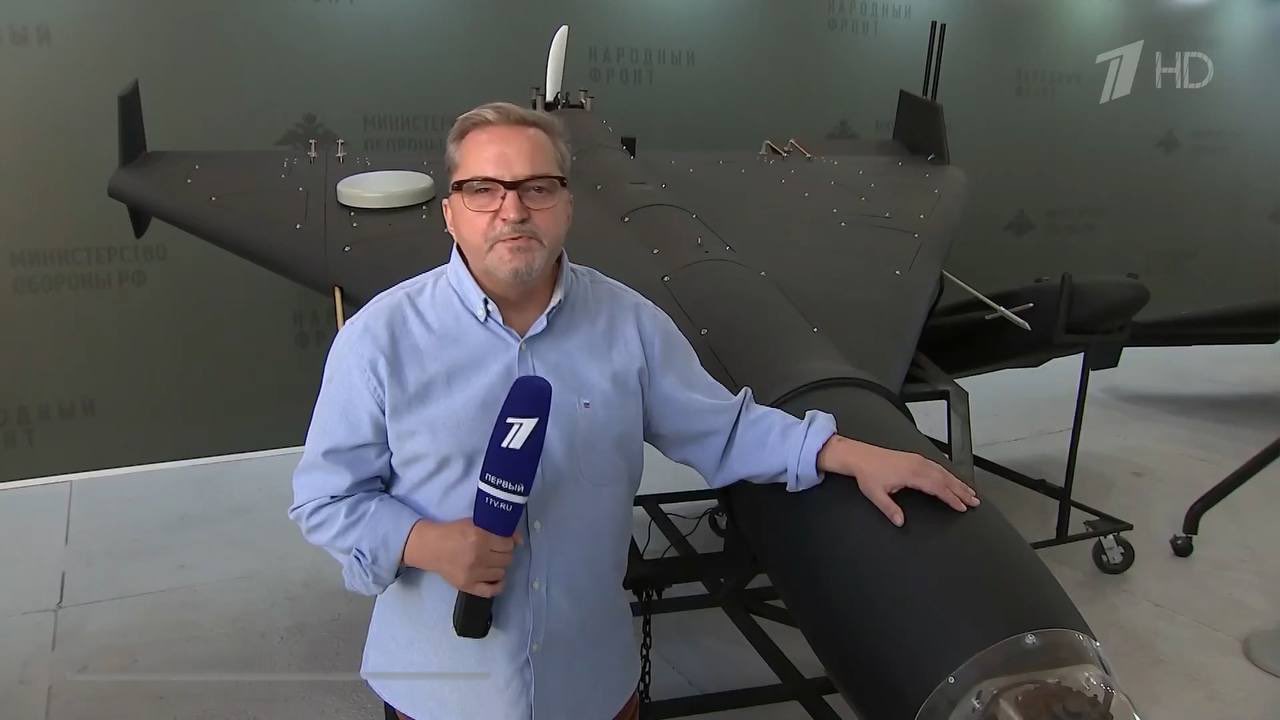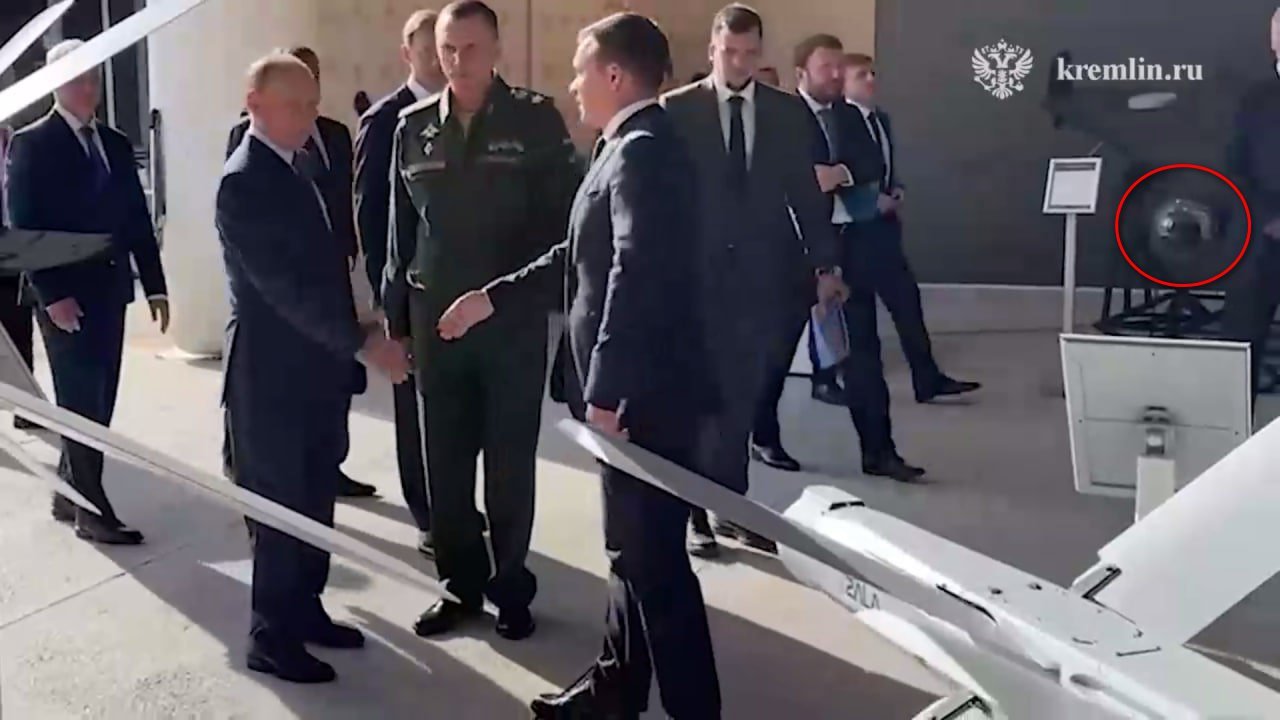According to the latest reports, the menacing Iranian-origin Shahed-136 kamikaze drones, also known as Geran-2 in Russia, may have been upgraded and equipped with electro-optical sensors.
A new video footage allegedly recorded from a Geran-2 one-way attack drone surfaced on October 19. According to military bloggers on X (formerly Twitter), the footage was recorded by the drone while it was on a mission to strike a target in Ukraine.
Some other military bloggers conjectured that the drone may have been equipped with a camera that recorded the video, based on recent instances of Geran-2 wreckage spotted with externally installed cameras. Analysts believe Russians have been equipping the kamikaze drones with cameras to conduct visual reconnaissance.
Although it is not clear how the video was recorded, the footage has been paired with claims about the EO sensors installed on Geran-2. Military analyst and an ardent follower of Russian military developments, Squadron Leader Vijainder K. Thakur told the EurAsian Times: “I believe it is from the Electro-Optical (EO) sensor, which has optical as well as thermal imaging.”
The EO-equipped drone, which is believed to be an upgraded variant of the widely used Geran-2, is believed to have a range of about 220 kilometers and can hit targets with an accuracy of 3 meters. However, this information is based on the claims swirling on Telegram and X and could not be independently corroborated.
The Russian Ministry of Defense (MoD) has not taken cognizance of the video or claims.
🇷🇺🇺🇦It is believed that this is the first published footage taken from the Geran-2 kamikaze UAV.
Earlier it was reported that some of these drones began to be equipped with 4G modems with Ukrainian SIM cards and rotating cameras.
As is known, initially these drones used a… pic.twitter.com/7TLCU8vi4t
— Intel Slava (@Intel_Slava) October 20, 2024
Nevertheless, evidence increasingly points to Russia working on a Geran-2 variant with EO sensors. For instance, a Geran-2 on display during President Vladimir Putin’s visit to the Special Technology Center in St. Petersburg earlier this year was seen equipped with EO sensors.
Additionally, a previously leaked document that carried information from Russia’s Geran factory in Alabuga also allegedly proposed an EO Geran-2 variant called MS-236.
According to the document, this drone has a flight range of 2,000 kilometers, a payload capacity of 50 kilograms, and a cruising speed of 170 kilometers per hour. Powered by a 50 hp engine, it can stay airborne for 12 hours. The variant likely features a 4G modem with a Ukrainian SIM card.
Interesting–footage from Putin's visit to the Special Technology Center in St. Petersburg shows what looks like a one-way attack UAV that resembles the Shahed-136/Geran-2 but has a seeker. Previously, a leaked document from Russia's Shahed/Geran factory in Alabuga included a… pic.twitter.com/cjpq88fxCM
— John Hardie (@JohnH105) September 19, 2024
Typically, EO sensors can deliver visual images that enable operators to identify targets accurately. These sensors can identify targets effectively so long as there is excellent visibility.
EO sensors combine optical and infrared detection capabilities. The height at which the sensor is mounted and its sensitivity determine the detection range. UAV-based optical sensors not only command height but are also mobile, facilitating surveillance of vast swathes of land.
Notably, unlike the baseline Geran-2, this particular variant is likely controlled by an operator who chooses and identifies the drone’s targets.

Russians have also reportedly equipped the Geran-2 drones with a jamming-resistant GLONASS antenna, “Kometa-M,” which enhances guidance precision. There is currently no information on whether this drone has rolled out of production lines and been extensively deployed by Russian forces at the frontline.
When asked how Russia would use these drones, Thakur told the EurAsian Times, “The drone would carry out real-time target identification with the electro-optical sensors, which would likely be followed by a swarm attack by Geran-2 drones.”
Moscow has heavily employed this kamikaze drone in operations against Ukrainian targets, specifically causing substantial harm to civilian infrastructure. Though the drone was initially purchased from Iran, Russia has been known to manufacture these drones locally for quite some time.
Moreover, it has reportedly fielded a jet-powered variant of the Shahed-136 or Geran-2 which goes by the name Shahed-236.
The kamikaze drones provide Russia with an expendable and cost-effective alternative to its expensive cruise and ballistic missiles. The idea behind deploying them in large numbers is that even if these drones are shot down, they would still deplete Ukraine’s stockpile of expensive surface-to-air missiles (SAMs).
That said, even as Russia continues to churn out new upgrades to its one-way attack drones, a Ukrainian firm has started work on a new First Person View (FPV) drone to counter the Geran-2.

Ukraine’s New Drone Will ‘Sting’ Geran-2?
The Ukrainian drone manufacturer Wild Hornets is developing an interceptor to counter Russia’s Shahed-136 loitering weapons, The Telegraph reported. The new first-person view (FPV) is designed to reach speeds of over 100 mph while operating at an altitude of over 10,000 feet.
A picture of a quadcopter drone equipped with a large explosive payload and a dome-mounted camera has also been published.
The Ukrainian forces have employed first-person drones to take down other drones on multiple occasions, using them to target unmanned aerial systems for reconnaissance, such as the Orlan-10 and the Zala.
If successful, the Sting would make Ukraine’s defense against hovering munitions enormously cheaper because Shahed-136 drones are widely estimated to cost as little as $20,000.
Conventional weapons, such as surface-launched missiles, used to defend against these drones can cost hundreds of thousands for Ukraine.
For instance, it costs about $1 million to launch a single missile in Ukraine using NASAMS, which is provided by the US. Though the exact manufacturing cost of the Sting drone has not been revealed, it will likely cost several times less than the Geran-2.

The development of the Sting drone corresponds with an uptick in drone attacks on Ukraine. Russia is currently producing 6,000 Geran-2 drones annually. Last month, it was announced that the production of these drones would increase by 10 times.
Though there have been reports of Ukraine conducting strikes on Russia’s Shahed-producing facilities, it has not stopped Russian forces from employing drones in regular aerial strikes conducted on Ukrainian cities.
The Ukrainian President, Volodymyr Zelenskyy, highlighted the increasing terror of the Shahed-136/Geran-2 drones during an address to the nation on October 20.
He noted that Russia has launched over 6,000 Shahed drones at Ukraine since the beginning of this year, adding that the country has had to shoot down the drones every day of the year. The President said the drone, which was given to Russia from Iran, has become “one of the main tools of Russian terror” against Ukraine. He also admitted that Russia and Iran are upgrading the drone.
While stating that Ukrainian forces either shoot the drone down or tackle them with electronic warfare systems, Zelenskky admitted that it does not, however, solve the problem and called on NATO to exert more pressure on the aggressor state.
- Contact the author at sakshi.tiwari9555 (at) gmail.com
- Follow EurAsian Times on Google News




